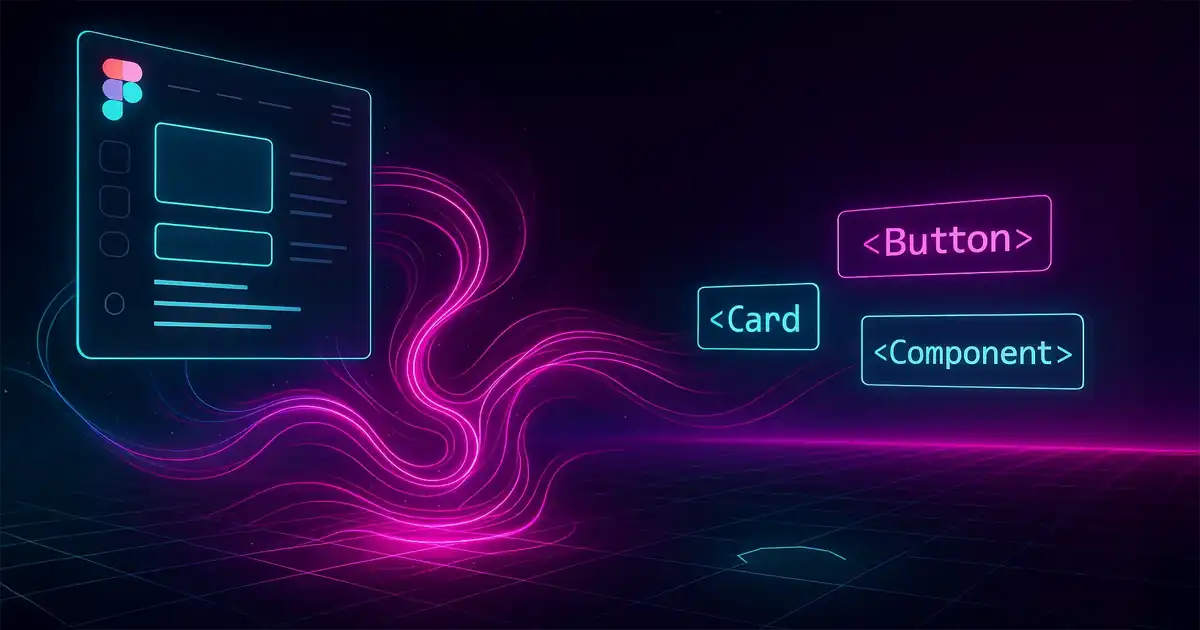
Creating AI-Optimized Figma Design Systems for Cursor AI, MCP, and Claude
If you’ve been anywhere near the design-to-development pipeline lately, you’ve probably noticed something profound happening. AI isn’t just changing how we write code—it’s fundamentally transforming how we think about design systems themselves.
Last week, I watched an AI tool generate a perfectly responsive React component from a Figma design in under 30 seconds. But here’s the kicker: it wasn’t magic. The secret was in how the design system was structured from the beginning.
After diving deep into this rabbit hole, experimenting with various tools, and yes, making plenty of mistakes, I’ve discovered that making your Figma design system AI-friendly requires rethinking almost everything. The good news? The payoff is massive—we’re talking 60-80% reduction in design-to-code time. Let me show you how.
The Three Pillars of AI-Optimized Design Systems
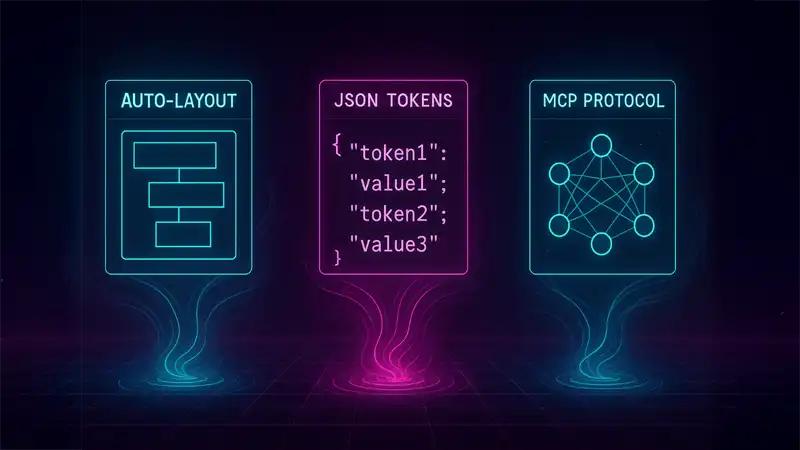
Through trial and error (and many late nights), I’ve found that successful AI integration stands on three essential pillars:
- Semantic structuring using auto-layout and clear hierarchies
- Comprehensive token systems with AI-parseable JSON formats
- MCP (Model Context Protocol) integration for direct AI access to design data
Miss any of these, and you’ll find yourself fighting against the AI rather than collaborating with it. But when you nail all three? That’s when the magic happens.
Structuring Figma Components: Think Like a Machine (Without Losing Your Soul)
Here’s something that took me way too long to realize: AI tools don’t “see” designs the way we do. They parse structure, relationships, and patterns. So we need to build our components in a way that makes sense to both humans and machines.
Auto-layout is non-negotiable. I can’t stress this enough. Every component needs to use auto-layout with clear “Hug contents” and “Fill container” properties. Why? Because this tells the AI exactly how elements should behave responsively. The new grid auto-layout flow (currently in beta) is particularly brilliant for complex layouts—I’ve seen it dramatically improve AI comprehension for dashboard designs.
But here’s where it gets interesting. I’ve found that a three-tier component hierarchy works best:
- Primitive components (buttons, inputs, icons)
- Composite components (cards, forms, navigation bars)
- Template components (full page layouts)
Each tier should maintain consistent patterns. Parent-child relationships need to be crystal clear through consistent padding and gap values. Trust me, your AI tools will thank you for this clarity.
One game-changer? Using Figma’s variant system religiously. Instead of creating multiple similar components, use variants with logical property names. Not Button1, Button2, Button3, but Button with properties like size: small/medium/large and state: default/hover/active. This enables AI to understand relationships and generate appropriate conditional logic.
Naming Conventions: Speaking AI’s Language
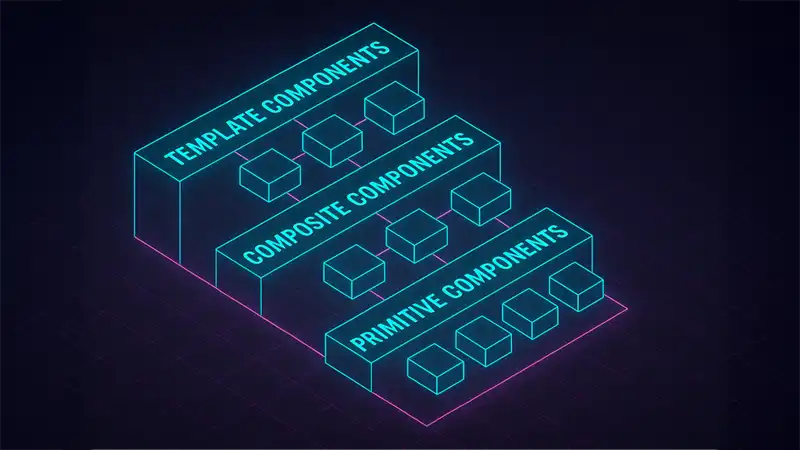
Let’s talk about something that seems trivial but isn’t: naming. After countless experiments, I’ve learned that semantic naming beats descriptive naming every time when it comes to AI consumption.
Here’s what works:
{namespace}-{category}-{property}-{modifier}
Real examples from my current system:
- Colors:
color-primary-500,color-error-default(notcolor-blueorcolor-red) - Typography:
text-heading-large,text-body-small - Spacing:
space-component-medium,space-layout-large
For components, use PascalCase with variants following the ComponentName/Property=Value pattern. This aligns perfectly with how modern AI tools expect to parse component relationships.
And documentation? Each component needs:
- A clear purpose statement
- Usage context
- Constraints
- Property definitions
Structure these consistently, and AI tools can parse them systematically. Figma’s Code Connect feature has been a game-changer here—it provides direct mapping between design components and code implementations. Teams I’ve worked with report 50% fewer inconsistencies after implementing it.
The Design-to-Code Revolution: Tools That Actually Work
Remember when converting designs to code meant hours of manual translation? Those days are gone. Here’s what’s working right now:
Builder.io’s Visual Copilot has been my go-to for complex components. Their custom-trained AI models understand design patterns remarkably well. One-click conversion to React with Tailwind CSS, and it actually produces production-ready code. I’ve seen 50-80% time savings on component creation.
Anima brings something unique to the table with its chat-based iteration. You can literally talk to it: “Make this button more accessible” or “Add hover states to all interactive elements.” It’s like pair programming with an AI that understands both design and code.
Locofy.ai Lightning claims 80% automation rates, and honestly? They’re not far off. Their Large Design Models (LDMs) are trained on millions of designs. The GitHub integration with smart merge capabilities solves a huge pain point—maintaining generated code alongside manual modifications.
But here’s a pro tip: for ultimate control, build custom solutions using the Figma Plugin API. You can create sophisticated code generation directly within Dev Mode, accessing the complete document tree and exporting exactly what you need.
Design Tokens: The Secret Sauce
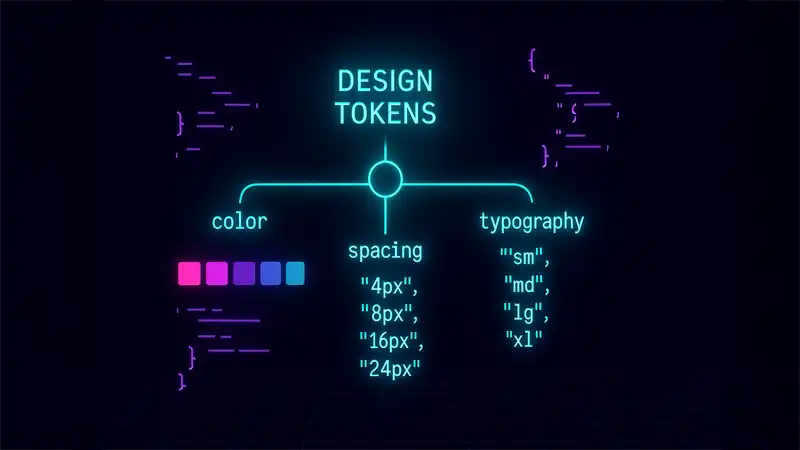
If components are the ingredients, design tokens are the recipe. They bridge design decisions and code implementation in a way that both humans and AI can understand.
Tokens Studio for Figma has become the industry standard, and for good reason. It supports:
- Multi-brand themes
- Complex token inheritance
- GitHub/GitLab synchronization
- JSON output optimized for AI parsing
I structure tokens in three tiers:
- Primitive tokens (raw values)
- Semantic tokens (purpose-driven aliases)
- Component-specific tokens
Here’s a real example from my current setup:
{
"global": {
"color": {
"primary": {
"100": { "value": "#E3F2FD" },
"500": { "value": "#2196F3" },
"900": { "value": "#0D47A1" }
}
},
"spacing": {
"xs": { "value": "4px" },
"sm": { "value": "8px" },
"md": { "value": "16px" }
}
}
}
This structure enables AI to understand both the what and why of design decisions. Tools like Style Dictionary can transform these into platform-specific formats while maintaining semantic meaning.
MCP: The Game-Changer You Need to Know About
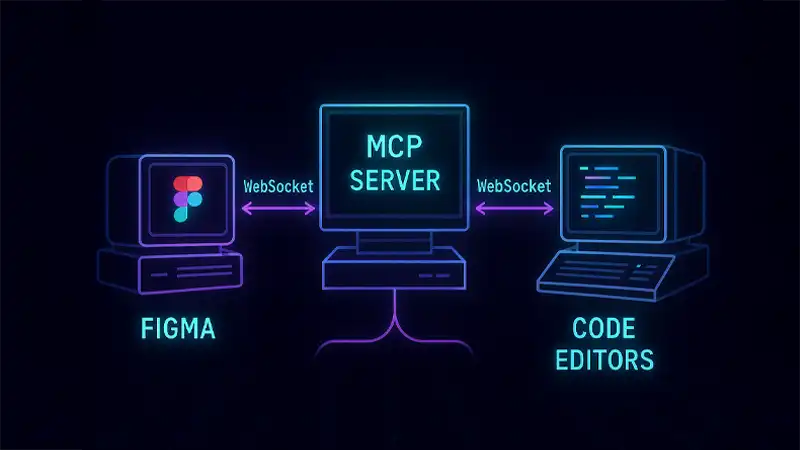
Let me introduce you to something that’s revolutionizing AI-design integration: MCP (Model Context Protocol). Think of it as “USB-C for AI applications”—a universal connection that solves the integration complexity between multiple AI tools and data sources.
The Cursor-Talk-to-Figma-MCP plugin is currently the gold standard. It provides full bidirectional communication between Cursor AI and Figma through 25+ specialized tools. WebSocket-based architecture enables real-time design updates and code synchronization. It’s like having a direct neural link between your design system and your code editor.
Figma’s official Developer MCP server (in public beta) works seamlessly with:
- Cursor
- VS Code with GitHub Copilot
- Claude (via the Claude-Talk-to-Figma-MCP plugin)
Setting it up is surprisingly straightforward:
npm install -g @figma/mcp-server
# or for Cursor-specific integration
npm install -g cursor-talk-to-figma-mcp
Then configure in your settings.json:
{
"mcpServers": {
"figma": {
"command": "node",
"args": ["path/to/figma-mcp-server"],
"env": {
"FIGMA_ACCESS_TOKEN": "your-token-here",
"FIGMA_FILE_KEY": "your-file-key"
}
}
}
}
Real-World Examples That Inspire
Let me share some design systems that are absolutely nailing the AI-optimization game:
ABB’s design system exemplifies comprehensive documentation. They maintain dedicated Figma files for each component with:
- Multiple documentation pages
- Use case examples
- Competitive analysis sections
- Clear status tracking (design/development/released)
This gives AI clear context about component maturity and appropriate use cases.
Intuit’s flexible token taxonomy shows how to build systems that work across multiple products (Mailchimp, QuickBooks, TurboTax) while maintaining AI parseability. Their hierarchical structure enables AI to traverse brand themes and product-specific variations systematically.
Leveraging Figma’s REST API for Maximum Power
The Figma REST API is your secret weapon for programmatic access to design data. Key endpoints for AI consumption:
/v1/files/{key}/nodes- Targeted node extraction/v1/files/{key}/components- Complete component library data
Pro tips for optimization:
- Use
geometry=pathsfor vector data extraction - Include
plugin_datafor custom metadata - Implement intelligent caching to handle rate limits
- Structure JSON responses with clear hierarchies
I’ve built custom GraphQL wrappers that simplify complex queries and reduce the cognitive load on AI systems parsing design data. It’s worth the initial investment.
Maintaining the Sacred Bond Between Design and Code
Consistency between designs and code isn’t a one-time achievement—it’s an ongoing commitment. Here’s my battle-tested approach:
- Automated validation workflows that continuously verify alignment
- Visual regression testing with tools like Percy or Chromatic
- AI-powered change detection using Applitools for intelligent monitoring
Implement a three-stage token synchronization pipeline:
- Export design tokens from Figma Variables
- Transform through Style Dictionary
- Validate against production code
This pipeline should run automatically on design updates, creating pull requests when changes are detected.
The Workflow That Actually Works
After much experimentation, here’s the workflow that consistently delivers results:
Week 1: MCP server setup and basic token structure Week 2: Component library implementation and automated synchronization Week 3: AI prompt optimization and quality assurance processes
The key is gradual implementation. Don’t try to convert your entire design system overnight. Start with a pilot component, learn, iterate, then scale.
Critical success factors I’ve identified:
- Early developer involvement in design decisions
- Shared context through comprehensive documentation
- Continuous feedback loops between design and development
- AI as an accelerator, not a replacement for human judgment
Common Pitfalls (And How to Dodge Them)
Let me save you some pain by sharing the mistakes I’ve made:
Over-complex component hierarchy
- Problem: Deeply nested components confuse AI parsers
- Solution: Limit nesting to 3 levels maximum
Inconsistent naming across teams
- Problem: Different conventions break AI pattern recognition
- Solution: Enforce naming through Figma plugins and automated linting
Missing context in design decisions
- Problem: AI generates technically correct but contextually wrong code
- Solution: Add usage guidelines and constraints as component descriptions
Token sprawl
- Problem: Too many tokens overwhelm AI context windows
- Solution: Implement token aliasing and semantic grouping
Practical Implementation: Let’s Get Our Hands Dirty
Here’s a complete example of an AI-optimized component structure:
// AI Prompt Template for Component Generation
"Generate a React component for the Button/Primary variant from Figma.
Include:
- All visual states (default, hover, active, disabled)
- Tailwind CSS classes matching design tokens
- TypeScript props interface
- Accessibility attributes"
This prompt, combined with proper Figma structure, consistently generates production-ready code.
For complex layouts:
"Create a responsive card component based on ProductCard in Figma.
Requirements:
- Use the grid-template-areas from auto-layout
- Implement responsive breakpoints from design
- Include all slot components for dynamic content
- Generate Storybook stories for each variant"
Performance Metrics That Matter
Let’s talk real numbers from actual implementations:
- Development Speed: 60-80% faster component creation
- Consistency: 90% reduction in design-implementation gaps
- Maintenance: 50% less time on design system updates
- Onboarding: New developers productive in days vs weeks
The implementation timeline that works:
- Week 1-2: Infrastructure setup and pilot component
- Week 3-4: Core component library migration
- Week 5-6: Team training and workflow refinement
- Week 7-8: Full production rollout
Future-Proofing Your Design System
The landscape is evolving rapidly. Here’s what’s coming:
Multimodal AI Integration: Voice and gesture-based design updates are already in early testing. Imagine describing a component verbally and watching it materialize.
Real-time Collaborative AI: Multiple AI agents working on different aspects of your design system simultaneously. One handling accessibility, another optimizing performance, another ensuring brand consistency.
Predictive Design Systems: AI suggesting components before you need them, based on usage patterns and project context.
Cross-platform Unification: Single design systems that adapt intelligently for web, mobile, AR/VR, and platforms we haven’t even imagined yet.
To prepare:
- Build flexible token architectures
- Maintain comprehensive component metadata
- Invest in team education
- Create feedback loops for continuous AI improvement
The Bottom Line
Creating AI-optimized Figma design systems isn’t just about adopting new tools—it’s about fundamentally rethinking how we structure, document, and maintain our design systems. It’s about building bridges between human creativity and machine efficiency.
The teams I’ve worked with report transformative improvements: massive time savings, dramatically reduced inconsistencies, and significantly improved component reusability. But perhaps the greatest benefit is how it elevates both designers and developers to focus on creative problem-solving while AI handles the mechanical translation.
The convergence of semantic component structures, comprehensive token systems, and MCP integration creates a powerful foundation for the future of design and development. And that future isn’t just automated—it’s intelligently augmented.
The tools and methods I’ve shared provide a practical roadmap for teams ready to embrace this AI-powered future. The key isn’t perfect implementation from day one, but starting the journey with clear goals, measuring progress, and continuously iterating.
The future of design systems is here. The question isn’t whether to adapt, but how quickly you can begin. Start small, think big, and let AI amplify your team’s capabilities. Trust me, once you experience the flow of a truly AI-optimized design system, there’s no going back.